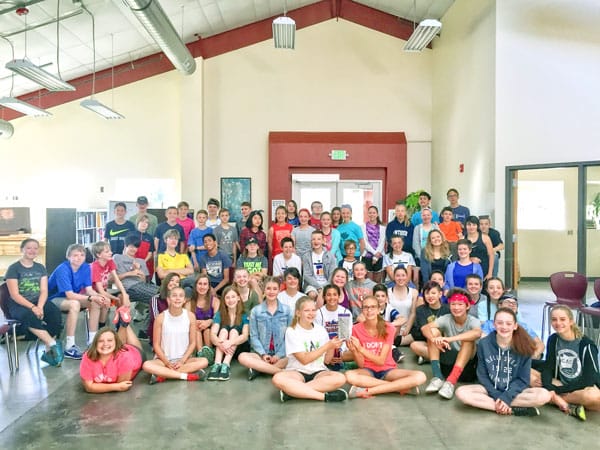DCS student experiment launched aboard sub-orbital rocket

Information provided by DCS Montessori
An experiment by DCSM students ended with success aboard a sub-orbital rocket. DCS Montessori partnered with DreamUp, a leading provider of space-based educational opportunities, to develop a custom curriculum. They used the flight opportunity as a teaching moment and engaged as many students as possible with elements of the payload development.
To maximize impact, the middle school students were split into four groups, responsible for designing and building the payload enclosure; developing and testing the experiment; generating and organizing a school-wide art project that would enable all students at the school to create something that would be sent into space; and developing an age-appropriate lesson to share with the preschool, lower elementary, and upper elementary students. By engaging the entire school in various aspects of the sub-orbital experiment, the students were exposed to a real-world challenge that incorporated science, technology, engineering, art and mathematics (STEAM) in a powerful and effective way.
The student payload consisted of two parts. The first included an Arduino Nano with a sensor package, designed and programmed by the students. The second part contained a school-wide art project that all DCS Montessori students participated in. Upon landing, the data from the experiment will be analyzed and the art will be returned to the students and shared with the community.
This payload flew on-board Blue Origin’s New Shepard space vehicle. The sub-orbital rocket flew through the middle atmosphere, an altitude of 31 miles to 62 miles known as the mesosphere and lower thermosphere. The New Shepard vertical takeoff and vertical landing vehicle is capable of carrying hundreds of pounds of payloads per flight and will ultimately carry six astronauts to altitudes beyond 100 kilometers, the internationally recognized boundary of space.
Development and launch of the student experiment was made possible by funding provided by DCS Montessori School and sponsorships from the Rocky Mountain Section of American Institute of Aeronautics and Astronautics (AIAA) and Kimley-Horn, one of the nation’s leading design engineering firms. Significant support was provided by DCS Montessori middle school teachers Mike Catalano and Nicole Gassman, who integrated the curriculum into their already-busy school year, and by industry volunteers such as Brian Gulliver, who worked directly with the students.
“It was enjoyable to work with such talented students during the development of the experiment and payload enclosure,” said Brian Gulliver, the aerospace and spaceport leader at Kimley-Horn and Associates. “This is a once-in-a-lifetime opportunity for many of the students to be able to create something that goes into space and all the students are very excited to get their experiment and art back.”
According to Carie Lemack, cofounder and CEO of DreamUp, in order to have a world where we live and work in low Earth orbit or beyond, we need a workforce prepared to perform all types of activities in space. “We are honored to work with Blue Origin and schools like DCS Montessori to inspire and engage the next generation of innovators and explorers,” she stated.
“We are delighted to be providing a full range of educational experiences on New Shepard, from K-12 outreach to Ph.D.-level research,” stated Erika Wagner, Blue Origin’s business development manager. “Congratulations to DreamUp and DCS Montessori for helping student dreams take flight!”
Read more about the project in the February 2017 issue of The Connection at www.castlepinesconnection.com, and enter “Blue Origin” in the search field.